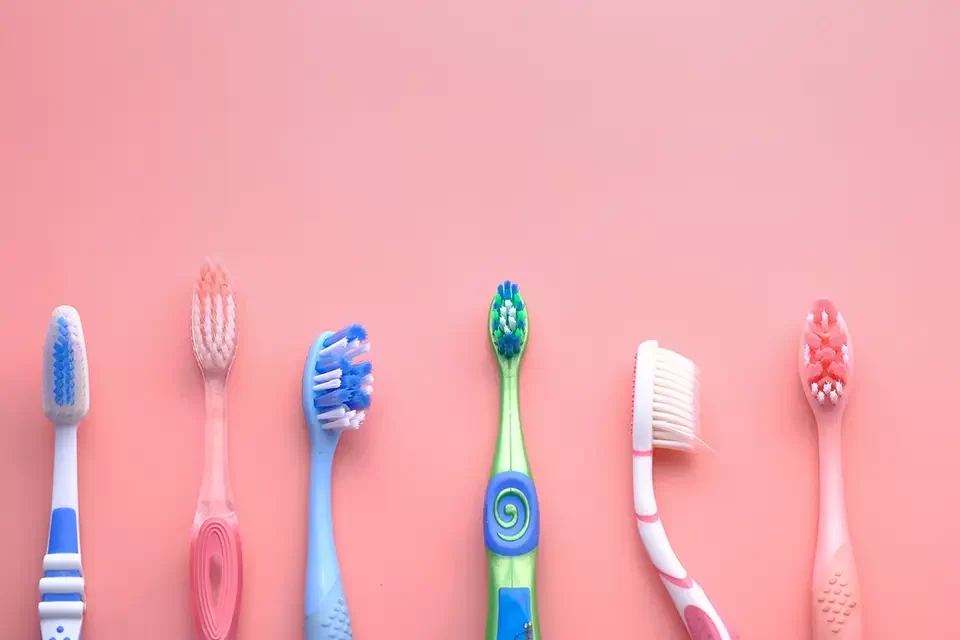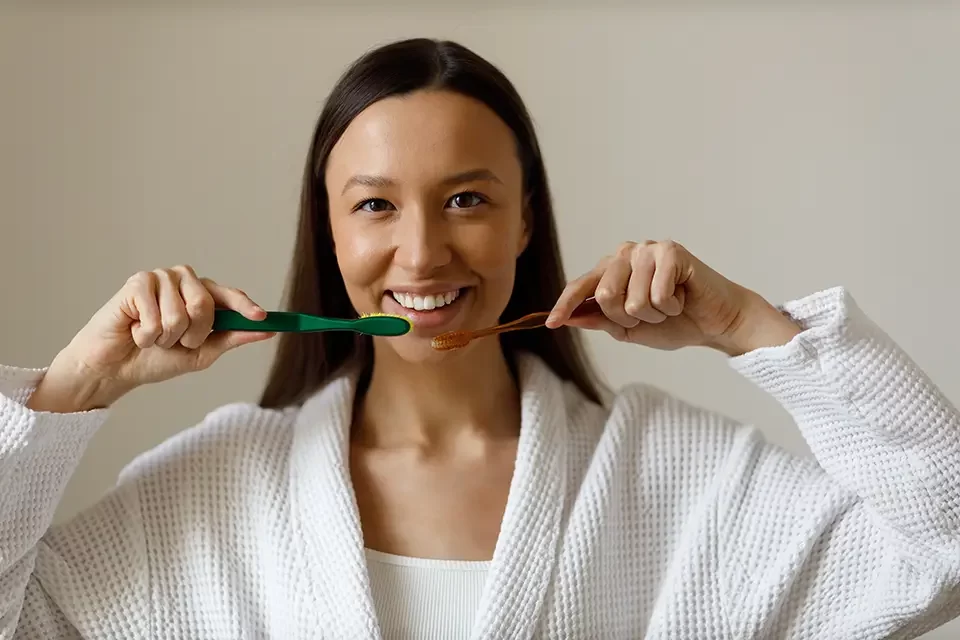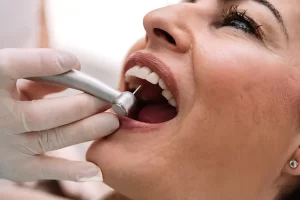Most people buy a toothbrush in under a minute. Grab one that looks decent, medium bristles, good colour, done. Then they sit in our chair at FIFTH ST Dental in Etobicoke, Ontario and ask why they still get bleeding gums, plaque build-up, or worn enamel. That’s where the question of the best toothbrush for healthy teeth really starts. The best toothbrush for healthy teeth isn’t about the loudest packaging or the highest price—it’s about how well it works with your mouth, your habits, and your gum health.
What follows is the kind of conversation we have every day at the practice, translated into something you can use next time you’re standing in that pharmacy aisle.
Best Toothbrush for Healthy Teeth: Start with One Rule: Soft Bristles Only
If you remember nothing else, remember this: choose soft bristles.
“Medium” and “hard” bristles feel satisfying if you like to scrub, but over time they can:
- Scrape enamel,
- Irritate or push back the gums,
- Expose sensitive root surfaces.
Soft, rounded bristles are firm enough to clear plaque but gentle enough to protect tissue. For children, adults, patients with gum issues or dental work—the same advice stands. Any version of the best toothbrush for healthy teeth starts here.
Head Size and Handle: Fit Matters More Than Features
A toothbrush should quietly help, not fight you.
Choose a brush that:
- Has a compact head so it can comfortably reach your back molars and the inside surfaces of front teeth.
- Sits securely in your hand without slipping.
- Lets you angle the bristles toward the gumline without feeling like you’re overreaching.
When we look at worn areas or missed spots during your exam, we can often tell if the brush is too big or awkward. A slightly smaller, well-shaped brush does more for oral health than three extra “massage” strips that never actually touch where they should. Details like this are what turn an ordinary brush into the best toothbrush for healthy teeth for your mouth.

Best Toothbrush for Healthy Teeth: Manual vs Electric
Both can work. The decision is not about what you “should” own, but what helps you clean properly.
Manual Toothbrush
- Works well if you have good technique and discipline.
- Low cost and easy to replace.
- Ideal for patients who are consistent and careful with brushing.
Electric Toothbrush
- Built-in timers help you actually brush for two minutes.
- Some models reduce pressure automatically if you brush too hard.
- Very useful for people with braces, arthritis, gum disease, or a history of missed areas.
If your hygienist keeps pointing to plaque in the same spots, or your gums stay inflamed despite effort, an electric brush often becomes your personal best toothbrush for healthy teeth simply because it removes some of the human error.
Best Toothbrush for Healthy Teeth: Matching the Brush to Your Mouth
There is no universal “best” choice without context. Here’s how we often tailor recommendations at FIFTH ST Dental:
For Sensitive Teeth or Recession
A very soft brush, lighter grip, and attention to technique. Aggressive scrubbing with firm bristles is usually what causes the problem.
For Orthodontic Patients
Smaller heads, orthodontic brush designs, or electric heads that clean effectively around brackets and wires.
For Kids
Child-sized heads, soft bristles, simple handles. Bright colours are fine if they help build a routine, but the basics still matter more than characters on the handle.
For Crowns, Bridges, and Implants
A soft brush plus proper interdental tools. The best toothbrush for healthy teeth here is one that keeps margins and gumlines clean without pulling or scratching.
If you’re unsure, bring your current brush to your appointment—we can tell you in ten seconds if it’s helping or working against you.
When to Replace Your Toothbrush (Sooner Than Most People Think)
Even the right brush stops being effective after a while.
Replace it:
- Every three months
- Or sooner if bristles start to flare or bend
- After a flu or contagious illness
Once the bristles are frayed, they don’t clean well. People compensate by pressing harder, which is exactly what we’re trying to avoid. A fresh soft brush is a simple, low-cost investment in keeping the best toothbrush for healthy teeth actually performing like it should.

Best Toothbrush for Healthy Teeth: Technique
You can choose well and still miss the mark if technique is off. A few practical reminders:
- Angle the bristles slightly toward the gumline, not straight at the teeth alone.
- Use small, controlled strokes—not heavy scrubbing.
- Brush all surfaces: outer, inner, and chewing.
- Take the full two minutes, morning and night.
- Clean between the teeth once daily with floss or alternatives.
A good brush makes this easier. It doesn’t replace it. The best toothbrush for healthy teeth is the one you can use properly without thinking about it too much—and we’re happy to demonstrate in the chair if you’d like a quick reset.
If you’re unsure whether your current routine is doing enough, bring your toothbrush and your questions to FIFTH ST Dental in Etobicoke. We’ll look at real signs in your mouth—gums, enamel, plaque pattern—and help you choose the best toothbrush for healthy teeth based on evidence, not advertising.
FAQs: Finding the Best Toothbrush for Healthy Teeth
Do I need a premium electric brush for good results?
Not necessarily. A soft manual brush with solid technique can work very well. Electric brushes are helpful when they solve a real problem: rushing, uneven cleaning, or brushing too hard.
Are "whitening" or charcoal bristles better?
We’re cautious with abrasive claims. Many of these rely more on marketing than on long-term safety data. A standard soft brush plus the right toothpaste is a safer path to healthy enamel and a clean smile.
My gums bleed when I brush—should I switch tools?
Bleeding is usually a sign of inflammation from plaque, not a reason to avoid brushing. A soft brush, correct technique, and a professional cleaning are the right next steps.
What's the simplest way to choose without overthinking?
Soft bristles, compact head, comfortable handle, and replaced regularly. If you want help beyond that, ask us—we’ll match a brush to your mouth, not to a trend.





